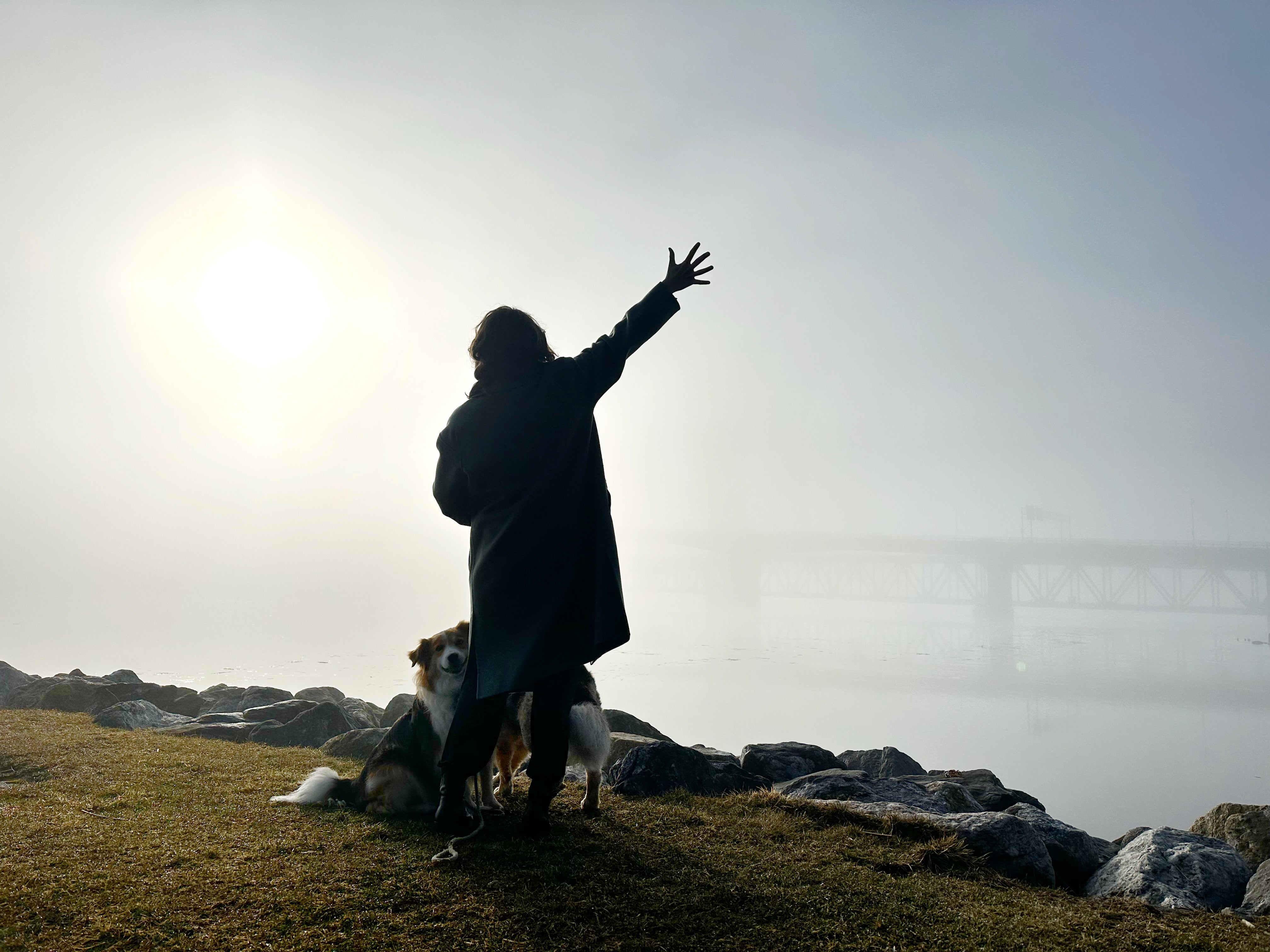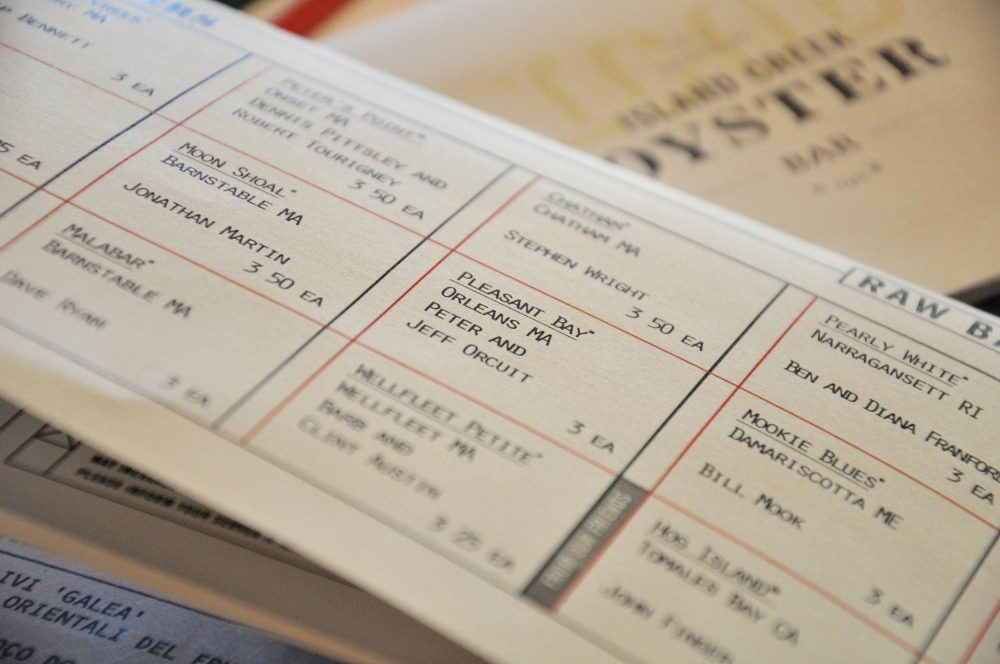An Irish Family Affair: The Story of Moyasta Oysters

Ireland, as many of us oyster lovers know, is the home to one of Europe's longest foodie celebrations, The Galway Oyster Festival, which started back in the mid-1950's by the manager of the Great Southern Hotel to boost a little revenue during the off-peak season. It now draws over 10,000 hungry oyster lovers every year and holds the "Olympics" for oyster shuckers.

Guinness draft, oysters and fresh brown bread. 1996 at the Galway Oyster Festival. Source: moransoystercottage.com
But Ireland itself has a history with oysters that I can't quite possibly cover in an introduction. Archaeologists have dated oyster eating back to over 8,000 years after unearthing kitchen-middens of ancient oyster shells. They were eaten in massive quantities throughout the 1800's (especially by the British) as well as a source of sustenance during the Famine. Ostrea edulis, the native oyster took a hit from overfishing and disease, similar to the oyster industry's pains on America's Atlantic shores like New York City. Although the O. edulis is still farmed today along with increased restoration efforts, Crassostrea gigas, the Pacific oyster, was introduced and became a major player as a juicier, meatier and less disease-prone alternative that helped to recreate much of the oyster industry in Ireland today.
With a little background in mind, Ireland's farmers, as you can imagine, are doing incredible work to restore the beautiful island's insulated bays with bivalve goodness. One of those farms is Moyasta Oysters. Hannah Galvin (Wife, Accountant, Spokesperson) and Thomas Galvin (Managing Director) gave me the scoop of Moyasta Oysters today and the road ahead.
Prepare to be inspired by the Irish! This is my first feature of a farm outside of the US, and I am thrilled that it is Moyasta.

A Moyasta Oyster. Source: www.moyastaoysters.com
The History, from Father to Family
Hannah & Thomas: Michael Galvin started the business 25 years, ago when he spotted another farmer walking down to the bay, which coincidently borders the Galvin family farm. He asked him what he was doing and the man simply replied," I’m going to start oyster farming." So, Michael decided that he would too! Fast forward twenty years and when Thomas, Michael's son, took over the reins, he increased production from 8-10 tons a year to 90 tons a year. Thomas has also built a state of the art factory with excellent machinery that enables Moyasta Oysters to produce the perfect product for our customer base. It really is a family affair with not only Michael helping out, but also Bernard (Thomas’s brother), who is the farm manager and Hannah (Thomas’s wife), who looks after the accounts and all of the paperwork.

From left to right: Bernard, Michael, and Thomas. Source: www.moyastaoysters.com

The factory. Source: www.moyastaoysters.com
Benefits of the Shannon River and Poulnasherry Bay
Hannah & Thomas: Our farm is located in the Grade A certified waters of Poulnasherry Bay on the west coast of Ireland. The Grade A status means that our bay is virus free fifty two weeks of the year and only a handful of bays in Ireland can say that. (Editor's note: European waters are classified on a scale of A, B, C, or D. Oysters harvested in Grade A waters are perfect for consumption without any treatment. Irish standards are more strict than the US and there is not an oyster on the market that hasn't been tested).
The strong currents of the Atlantic Ocean are ideal and the abundance of algae and phytoplankton of the River Shannon combined with the natural rich minerals of Poulnasherry Bay create the perfect environment, giving the Moyasta Oyster (Crassostrea gigas) its fresh unique flavor.
Evolving Systems

Moyasta has traditionally used the tressle and bag system but is moving towards Seapa bags. Source: www.moyastaoysters.com
Hannah & Thomas: We currently use the traditional trestle and bag system however we are in the process of moving to the Seapa basket system. We have found that with the Seapa bags we can utilize the wave and current motion of the bay to our advantage. This allows us to perfect our oyster shape and meat content which is of great importance to our customer base. In our factory we mostly use in-water grading systems for juvenile and half grown oysters, while also having the luxury of having a circular cup grader for our market ready oysters. This makes it easier for us to provide the customer with their chosen type of oyster requirement. We were happy to work with Mulot SAS in order to personalize machinery to suit our needs and our factory.
The Joys and Threats of Oyster Farming
Hannah & Thomas: The greatest thing about being an oyster farmer is to be able to get out on our farm in the open bay, and really appreciate the nature around us. The interaction with customers and other oysters farmers is also extremely rewarding. We are very lucky to be based in a bay that is disease-free however keeping this standard can be challenging. The threat of disease could cease production for us however - fingers crossed - we successfully continue with our grade A status. Thomas also used to find the mountains of paperwork a challenge until Hannah joined the company full time!
What Should a Consumer Expect

Moyasta Oysters. Source/Photographer: In a Half Shell Blog, Julie Qiu
Hannah & Thomas: Our oysters have a unique taste which has been likened to a grassy, cucumber flavor at first with a sweet finish due to low salinity. Our shells range from deep purple to light brown and we are very fortunate not to have any problems with barnacles or other critters attaching themselves to our oysters.
Can you share a local spot where we can find them?
Hannah & Thomas: Our oysters can be found locally at the Pier Restaurant located in Kilkee which is a local village that is a ten minute drive from our farm. Here is the link to their details.
What is next for Moyasta Oysters?

Farm tours coming soon! Source: Moyasta Oysters Facebook.
Hannah & Thomas: We are currently putting together the idea of Farm tours which would be open to the public. There has been great interest locally and internationally to learn more about what we do and how we farm our oysters. Keep an eye on our website for future details on when we will be operating these!
____________________
Thank you, Hannah and Thomas, for sharing your story and the evolution of your business. I hope many of our readers are inspired to make a trip to Ireland for a future farm tour! Readers can find our more about Moyasta Oysters at www.moyastaoysters.com, and give them a follow on Instagram at @moyastaoysters .



